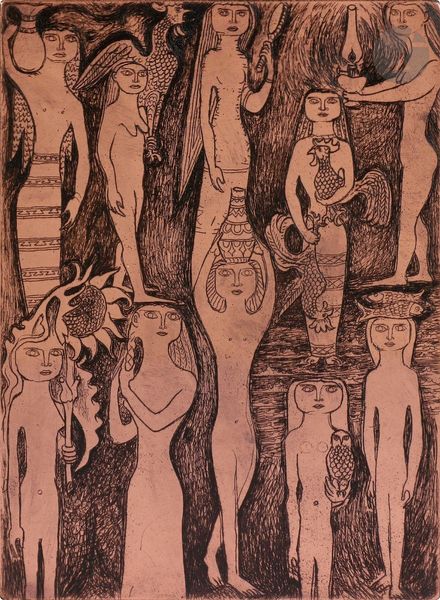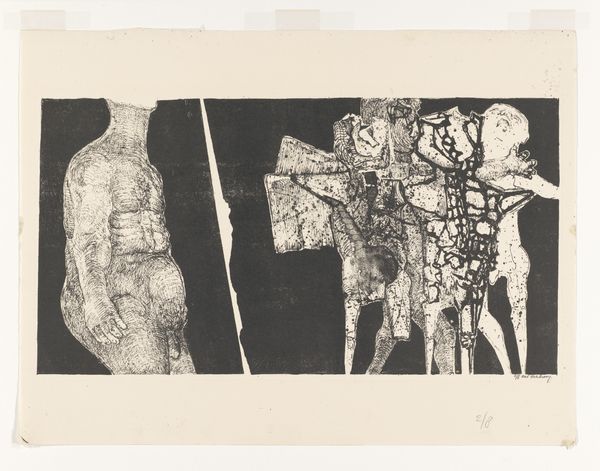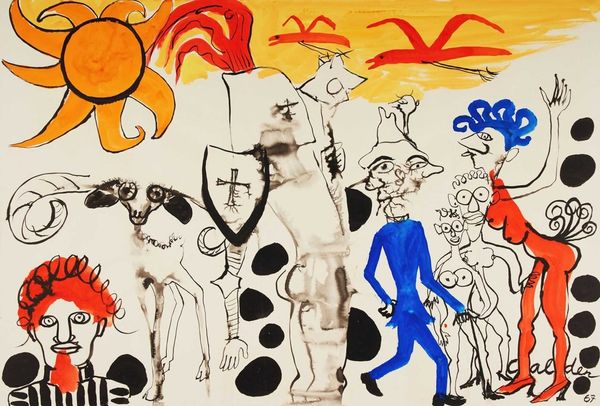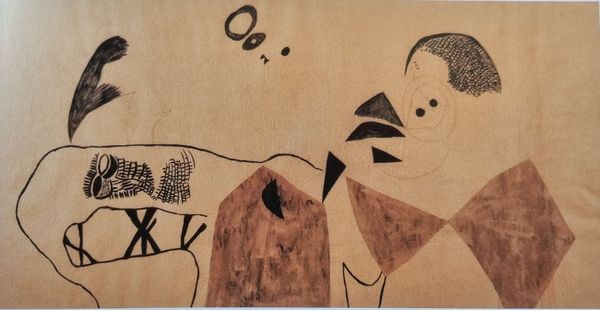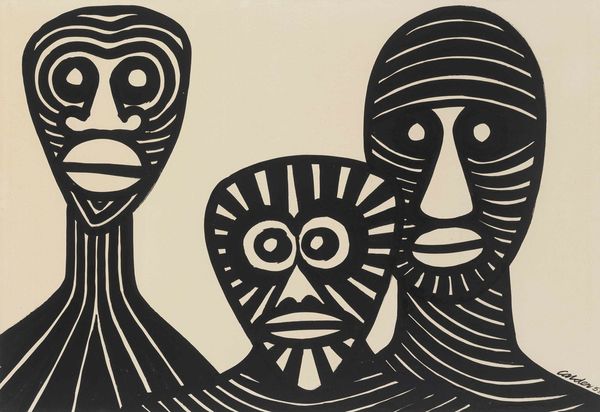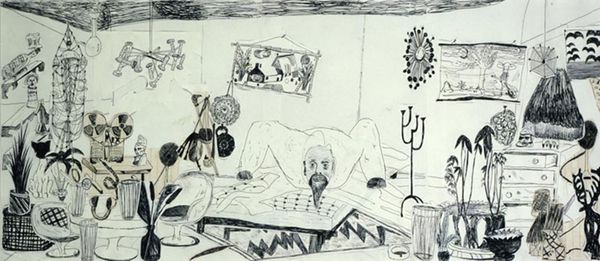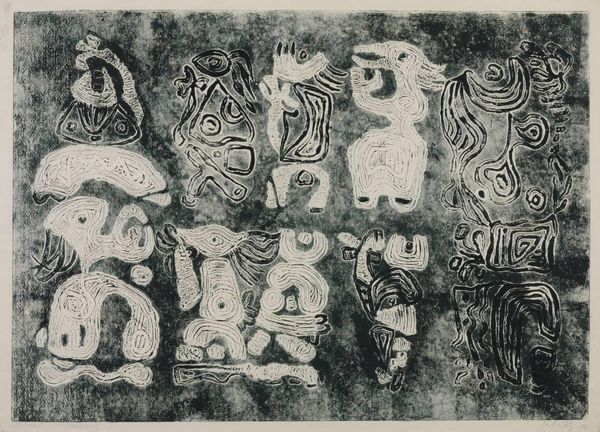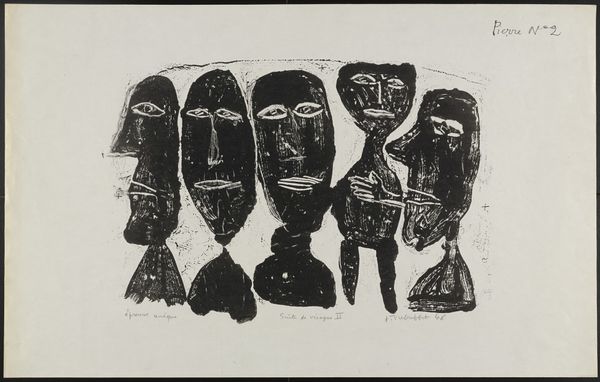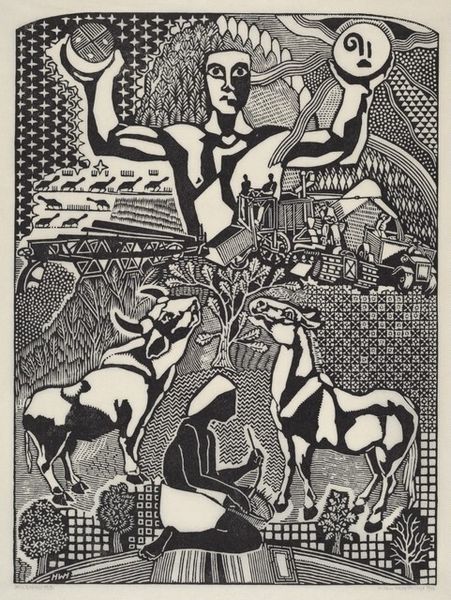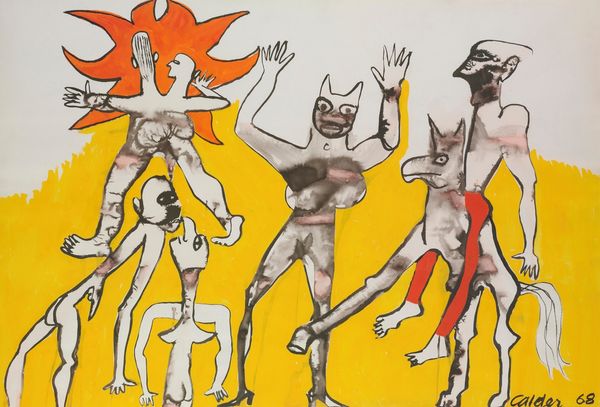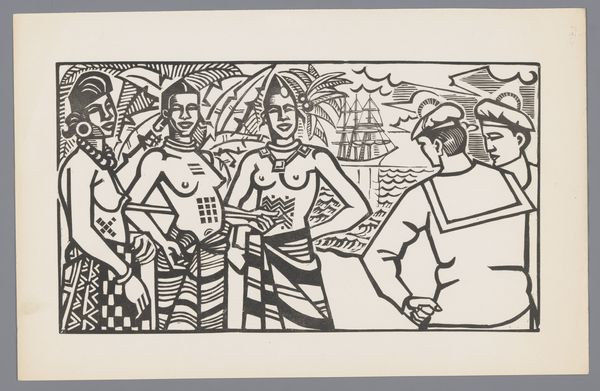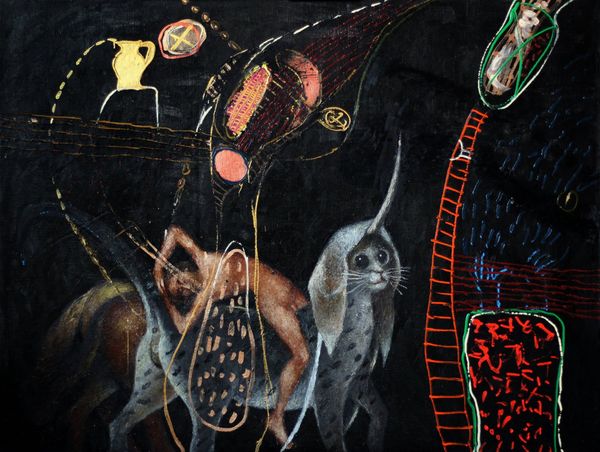
Dimensions: 43.5 x 66 cm
Copyright: Endre Rozsda,Fair Use
Curator: Endre Rozsda's graphite drawing, "Deux Prostituées," from 1955, presents a captivating, if unsettling, scene. What are your initial impressions? Editor: Stark and somewhat surreal. The disproportionate figures and unsettling gaze create an atmosphere of alienation, as if we are viewing a hidden, distorted world. Curator: Rozsda, while engaging with modernism, always remained intensely connected to social realities. The choice of subject matter immediately places this drawing within discussions about marginalized communities and the objectification of women. Consider the socio-political climate of 1955, especially the situation for sex workers. Editor: And yet, there's a definite stylistic borrowing happening. The women themselves, their postures, and even the patterned clothing remind me of earlier depictions of courtesans and goddesses. Look at how their garments almost act as symbols rather than just attire—miniature houses even. Could that signal ideas of "home," property, and commodification? Curator: Absolutely, there's a complex interplay here. It feels important to recognize the power dynamics at play, dissecting who benefits from these representations, who is being looked at, and under what circumstances. Editor: I find the repeated facial profile almost voyeuristic. It’s like another set of eyes scrutinizing them, adding to this layered experience of being watched. Rozsda presents visual symbols, so rich they trigger these cultural echoes. Curator: It really is fascinating how he layers these various art historical and social references. We're not simply viewing a portrait; we are confronting questions of societal power structures and representation itself. Editor: I will consider line work. There is a sharp quality to the linework itself, yet the drawing still reads to be delicate because Rozsda only utilized one shade, and I am able to track a beautiful range within one color. I will always see so much happening within such limited tones! Curator: Rozsda challenges us to critically engage with the themes of sexuality, exploitation, and representation that still resonate profoundly today. Editor: Yes. The symbolic density, the echoed imagery—it all combines to present these women not as just bodies but also as mirrors reflecting cultural obsessions.
Comments
No comments
Be the first to comment and join the conversation on the ultimate creative platform.
